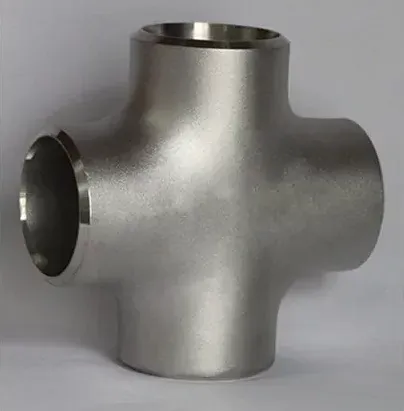-
Cangzhou Yulong Steel Co., Ltd.
-
Phone:
+86 13303177267 -
Email:
admin@ylsteelfittings.com
- English
- Arabic
- Italian
- Spanish
- Portuguese
- German
- kazakh
- Persian
- Greek
- French
- Russian
- Polish
- Thai
- Indonesian
- Vietnamese
- Zulu
- Korean
- Uzbek
- Hindi
- Serbian
- Malay
- Ukrainian
- Gujarati
- Haitian Creole
- hausa
- hawaiian
- Hebrew
- Miao
- Hungarian
- Icelandic
- igbo
- irish
- Japanese
- Javanese
- Kannada
- Khmer
- Rwandese
- Afrikaans
- Albanian
- Amharic
- Armenian
- Azerbaijani
- Basque
- Belarusian
- Bengali
- Bosnian
- Bulgarian
- Catalan
- Cebuano
- China
- China (Taiwan)
- Corsican
- Croatian
- Czech
- Danish
- Esperanto
- Estonian
- Finnish
- Frisian
- Galician
- Georgian
- Kurdish
- Kyrgyz
- Lao
- Latin
- Latvian
- Lithuanian
- Luxembourgish
- Macedonian
- Malgashi
- Malayalam
- Maltese
- Maori
- Marathi
- Mongolian
- Myanmar
- Nepali
- Norwegian
- Norwegian
- Occitan
- Pashto
- Dutch
- Punjabi
- Romanian
- Samoan
- Scottish Gaelic
- Sesotho
- Shona
- Sindhi
- Sinhala
- Slovak
- Slovenian
- Somali
- Sundanese
- Swahili
- Swedish
- Tagalog
- Tajik
- Tamil
- Tatar
- Telugu
- Turkish
- Turkmen
- Urdu
- Uighur
- Welsh
- Bantu
- Yiddish
- Yoruba

Nov . 03, 2024 08:39 Back to list
bending 316 stainless steel tubing
Bending 316 Stainless Steel Tubing A Comprehensive Overview
316 stainless steel tubing is renowned for its exceptional corrosion resistance and durability, making it a popular choice in various industries, including automotive, medical, and food processing. However, bending this type of tubing requires careful consideration and expertise to ensure structural integrity and functionality.
Bending stainless steel tubing, particularly 316 grade, poses unique challenges due to its strength and work-hardening properties. Unlike softer metals, 316 stainless steel becomes stronger when deformed. This characteristic necessitates precise control during the bending process to avoid cracking or kinking.
The bending process typically involves two main techniques rotary drawing and induction bending. Rotary drawing is commonly used for smaller diameters, where the tube is pulled through a die to achieve the desired angle and radius. This method provides excellent control over the dimensions and is suitable for complex shapes. Conversely, induction bending is ideal for larger diameter tubes. This technique uses heat generated by induction coils to soften the metal, allowing it to be bent without losing its structural integrity.
bending 316 stainless steel tubing

When planning to bend 316 stainless steel tubing, it’s crucial to consider the bend radius. A tighter bend radius can lead to issues such as thinning of the wall and increased stress concentrations, which may ultimately compromise the tubing's performance. Manufacturers often recommend a minimum bend radius of 2.5 times the outer diameter of the tubing, but this may vary based on specific project requirements and the wall thickness of the material.
Another important factor is the use of proper tooling. Inadequate or worn-out bending tools can lead to uneven bends and surface defects. Ensuring that tools are appropriately maintained and calibrated can significantly affect the final product's quality.
Lastly, post-bending processes such as annealing may be necessary to relieve any internal stresses introduced during bending. Annealing not only restores the tubing's ductility but also enhances its corrosion resistance, making it essential for applications that demand stringent quality standards.
In conclusion, bending 316 stainless steel tubing is a specialized process that requires significant skill and knowledge. By understanding the properties of the material and utilizing the appropriate techniques and tools, manufacturers can achieve precise bends that meet the industry's highest standards. Whether for structural applications or intricate designs, the versatility of 316 stainless steel makes it an invaluable material in modern engineering.
Latest news
-
ANSI 150P SS304 SO FLANGE
NewsFeb.14,2025
-
ASTM A333GR6 STEEL PIPE
NewsJan.20,2025
-
ANSI B16.5 WELDING NECK FLANGE
NewsJan.15,2026
-
ANSI B16.5 SLIP-ON FLANGE
NewsApr.19,2024
-
SABS 1123 FLANGE
NewsJan.15,2025
-
DIN86044 PLATE FLANGE
NewsApr.19,2024
-
DIN2527 BLIND FLANGE
NewsApr.12,2024
-
JIS B2311 Butt-Welding Fittings LR/SR 45°/90° /180°Seamless/Weld
NewsApr.23,2024











